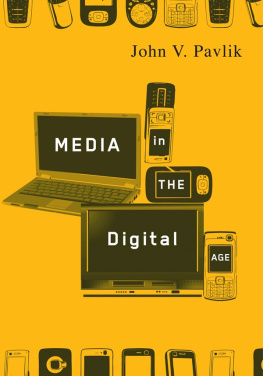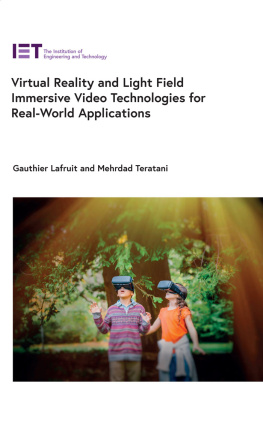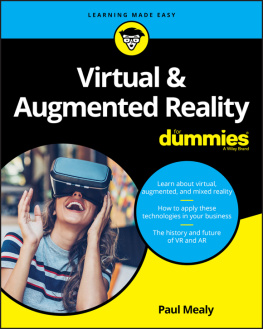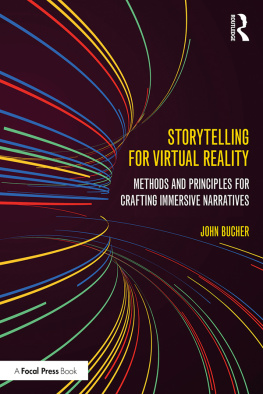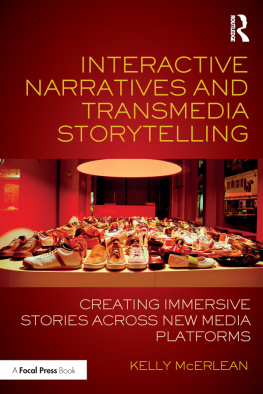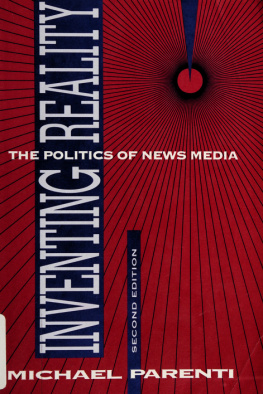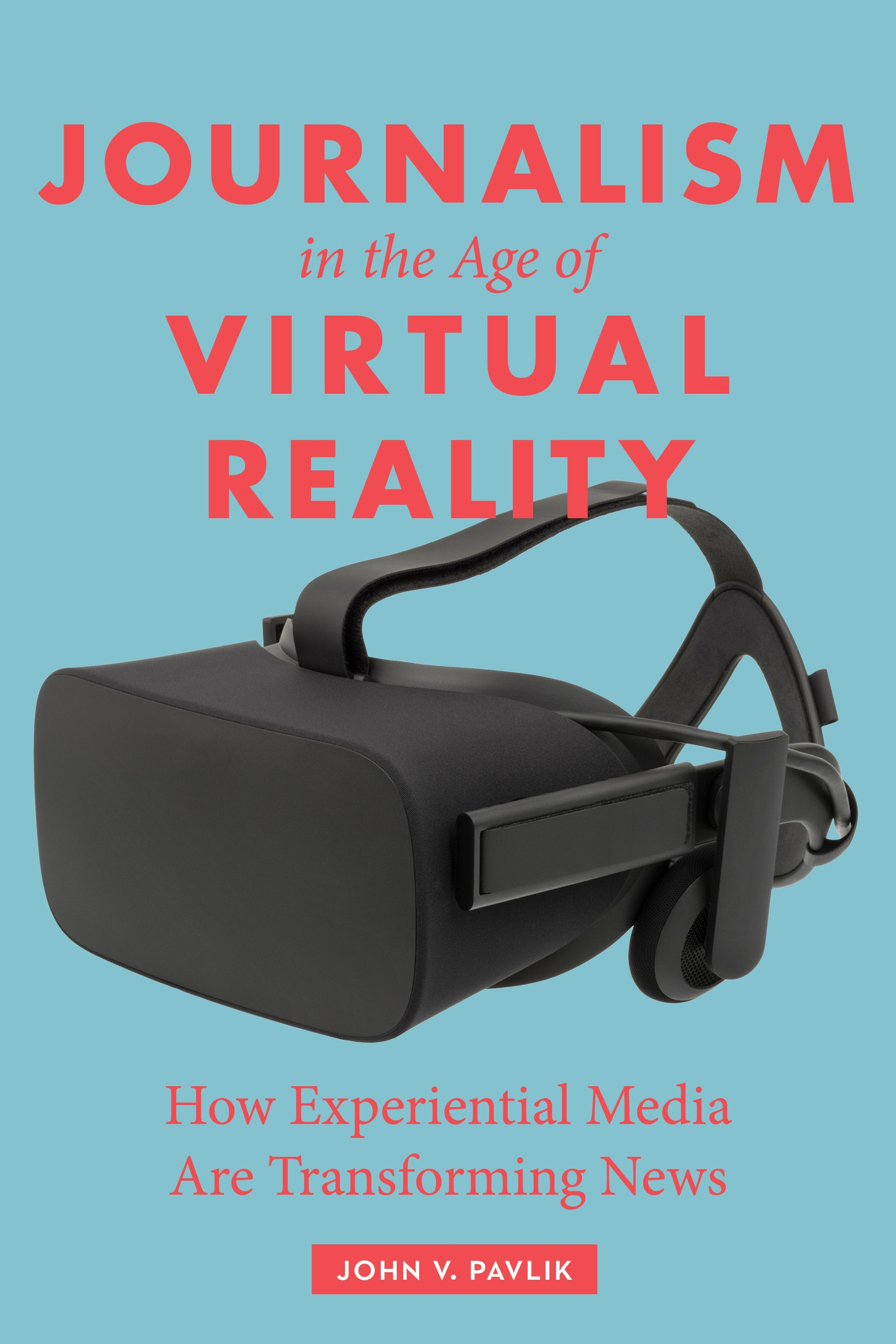Contents
Guide
Pagebreaks of the print version
JOURNALISM IN THE AGE OF VIRTUAL REALITY
Journalism in the Age of Virtual Reality
How Experiential Media Are Transforming News
John V. Pavlik
Columbia University Press New York 
Columbia University Press
Publishers Since 1893
New York Chichester, West Sussex
cup.columbia.edu
Copyright 2019 Columbia University Press
All rights reserved
E-ISBN 978-0-231-54551-8
Library of Congress Cataloging-in-Publication Data
Names: Pavlik, John V. (John Vernon), author.
Title: Journalism in the age of virtual reality : how experiential media are transforming news / John V. Pavlik.
Description: New York : Columbia University Press, [2019] | Includes bibliographical references and index.
Identifiers: LCCN 2019006034 | ISBN 9780231184489 (cloth : alk. paper) | ISBN 9780231184496 (pbk. : alk. paper)
Subjects: LCSH: JournalismTechnological innovations. | Online journalism. | Virtual realitySocial aspects.
Classification: LCC PN4784.T34 P38 2019 | DDC 070.4/3dc23
LC record available at https://lccn.loc.gov/2019006034
A Columbia University Press E-book.
CUP would be pleased to hear about your reading experience with this e-book at .
Cover design: Martin N. Hinze
Contents
I offer my thanks to all those who helped make this book more than a virtual reality. I am especially grateful to Philip Leventhal, editor at Columbia University Press, for his insight and guidance in the development of this undertaking. Thanks as well to Eli Noam, founder of the Columbia Institute for Tele-Information (CITI), for inviting me to speak on a panel titled Future Content in October 2015; it inspired many of the ideas contained herein. I give special thanks to Michael Guillorn of IBM for his observations about emerging technologies and the implications for journalism. My deepest thanks and love to Jackie, my wife, for her love, support, and collaboration, and to our daughters, Tristan and Orianna, for their love and many digital insights.
This book examines the nature, parameters, and consequences of virtual reality, augmented reality, and other experiential media on journalism, especially the content of news. Enabled by advances in technology platforms, experiential news presents an opportunity to engage an increasingly fragmented public. In addition, I will discuss the practical, ethical, and political implications for those who create the news as well as those who consume or interact with that content. The book outlines a conceptual framework for critically understanding this evolving news form. Central to this analysis is an examination of the evolving user experience, which is increasingly interactive, multisensory, and immersive.
The shifting nature of journalism and media content reflects the notions of scholars such as Harold Innis, Marshall McLuhan, and James Carey, who have suggested that the parameters of a communication medium can shape media content, form, and meaning. I do not contend that this changing landscape is technologically determined. Rather, a confluence of forces including economic, legal, and cultural factors will shape this shift in media and journalism.
This book also does not suggest that experiential news will replace more traditional forms of journalism and media content. Throughout the history of journalism, as earlier developments have transformed or fueled changes, traditional forms have continued, although their roles have generally shifted to positions of less dominance especially among younger segments of the population. Evidence suggests that such is likely to be the case in an era of experiential journalism and media content. Data from a Pew Research Center report, for example, indicates that in the United States, newspapers continue to have a high overall level of reach, although it is declining. Total U.S. daily newspaper circulation (print and digital combined) in 2017 was thirty-one million for weekdays and thirty-four million for Sundays. Two-thirds (66 percent) of digital newspaper consumption is among those aged eighteen to forty-nine. Meanwhile, more than half (54 percent) of printed newspaper consumption is by those aged fifty or older. Notably, the development of the phablet (that is, a generation of large-screen smartphones with screens between five and seven inches) has fueled digital news consumption. Among persons aged twenty-five to thirty-four, phablet users are the heaviest consumers of news.
Todays public is engaging in wide-sweeping new media behaviors and news habits, which are increasingly mobile and social and occur via experiential media. These shifts portend profound implications for a transformed journalism in the twenty-first century. For journalism to be successful in this transformation, it will be essential to both understand the nature of experiential media and grapple with their effective use in journalistic content. Much as journalism pioneers in the late 1940s and early 1950s grappled with how to best use the emerging medium of television to create quality news content, journalists today need to assert new methods and techniques to produce journalistic excellence in an increasingly virtual media world.
In the pages that follow, this book offers eight chapters that provide a guide to achieving that journalistic excellence in experiential news.
situates the shifting nature of contemporary journalism in a historical context, arguing that we are entering a third age of news content or journalistic stories.
discusses the nature of design and a set of six principles and practices that journalists can employ in creating quality experiential news content, which can better engage the evolving news public.
focuses on the news users experience. The multisensory, interactive, and immersive nature of this experience is most evident in augmented reality and virtual reality. It is increasingly a part of other emerging media forms, including interactive audio devices, ultra-high-definition video, and artificial-intelligence and data-driven media platforms.
examines the encoded nature of experiential news. Geo-location, data, and algorithms signal a fundamental shift in the ways news content is not only delivered but also accessed and engaged by the public.
reviews the interactive documentary, a new news format that has emerged as an increasing international standard in journalism over the past two decades. This interactive news format represents a core dimension of experiential news, and the award-winning news content I discuss in this genre provides a roadmap to creating excellence in journalism content in the coming decades.
outlines the emergence of drones to provide an essential reporting tool for creating innovative experiential news. Drones have been in development for more than a century but have emerged since 2010 as a mobile platform that can provide unique, geo-located, mobile news coverage and enable compelling news experiences for a public whose media expectations are a far cry from those of a generation ago.
articulates several of the key factors that will shape the development and potential adoption of experiential news, including economic, technological, and regulatory considerations both domestically and internationally.
Finally, provides an experiential media parable to overlay a moral framework on the development of experiential news. The fake-new crisis that emerged in the 2016 U.S. presidential election may pale in comparison to the potential artificial realities of the decade ahead. Journalists will need to embrace a strong set of ethical practices to ensure that experiential news leads to a fuller and more robust explication of truth, understanding, and trust on matters of public interest and importance.


